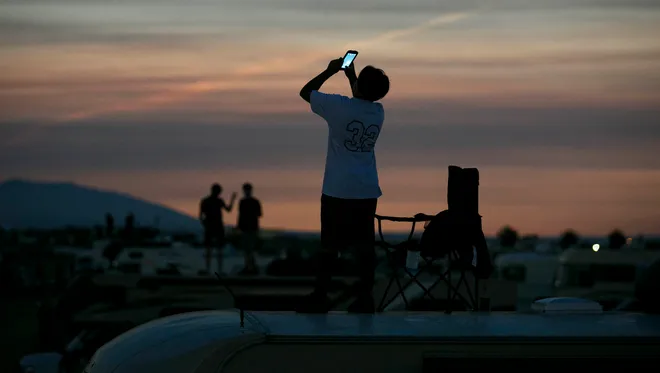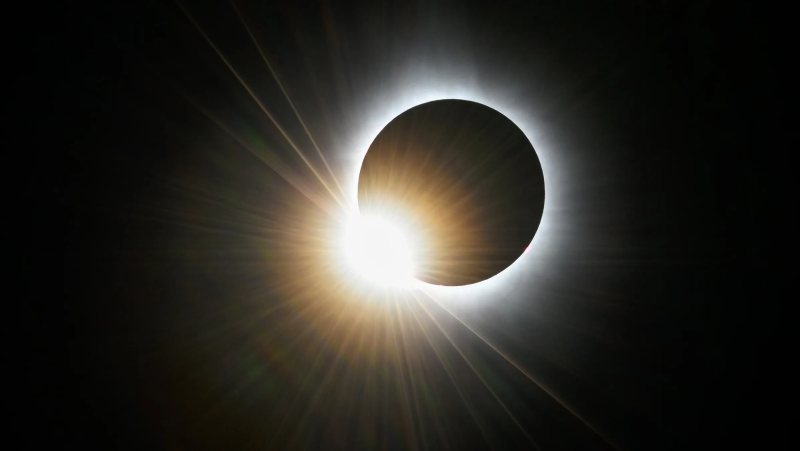How dark will the solar eclipse be? Path of totality gives you a much different experience
The long-anticipated total solar eclipse will arrive Monday afternoon and cover the skies over a large portion of the United States.
The total eclipse will appear in the skies above the U.S., all the way from southern Texas to northern Maine. The rare event will see the shadow of the moon cover a narrow strip of land in darkness in the middle of the day.
The total eclipse will begin in Mexico at about 11:07 a.m. PDT on Monday before crossing into Texas at 1:27 p.m. CDT. It will end in Maine at 3:35 p.m. EDT. The partial eclipse will last for awhile longer. Even if you're not in the path of totality and won't see the full eclipse, you may still see a percentage of it.
To find out exactly when the eclipse will be happening in your area, you can search by USA TODAY's database by ZIP code for a viewing guide.
But how dark will it really get during an eclipse? Here's what to expect.
How dark does it get during a total solar eclipse?
If you're in the path of totality, where the moon completely covers the sun, the sky will become dark as if it were dawn or dusk, according to NASA.

For those who only experience a partial solar eclipse, the sky will appear slightly darker than it was before the eclipse, depending on how much the moon blocks the sun in their location, NASA says.
“When the moon covers 85% of the sun, it’s still no darker than being in the shade on a sunny day and even at 95%, it’s an overcast day-darkness,” said Dr. Angela Speck in a video. Speck is the chair of the Physics and Astronomy department of the University of Texas at San Antonio.
Speck points out in the video that even at 99.9% partial eclipse, there is still at least 100 times more light coming from the sun than during totality.
And even if you're in the path, don't expect the darkness to last too long. Totality may only last a couple minutes in some areas.
How much of a temperature drop do you get during a total solar eclipse?
NASA says you can expect the temperature to drop about 10 degrees Fahrenheit depending on the humidity and cloud cover at your location.

Total solar eclipse livestream
USA TODAY is providing live coverage of the 2024 solar eclipse beginning at noon E.T. on Monday in a number of areas along the eclipse's path of totality, including Washington, D.C., Texas, Oklahoma, Indiana and New York. You can watch live at the embedded video below or on USA TODAY's YouTube channel.
Contributing: Doyle Rice & Eric Lagatta, USA TODAY
Gabe Hauari is a national trending news reporter at USA TODAY. You can follow him on X @GabeHauari or email him at Gdhauari@gannett.com.
Disclaimer: The copyright of this article belongs to the original author. Reposting this article is solely for the purpose of information dissemination and does not constitute any investment advice. If there is any infringement, please contact us immediately. We will make corrections or deletions as necessary. Thank you.



